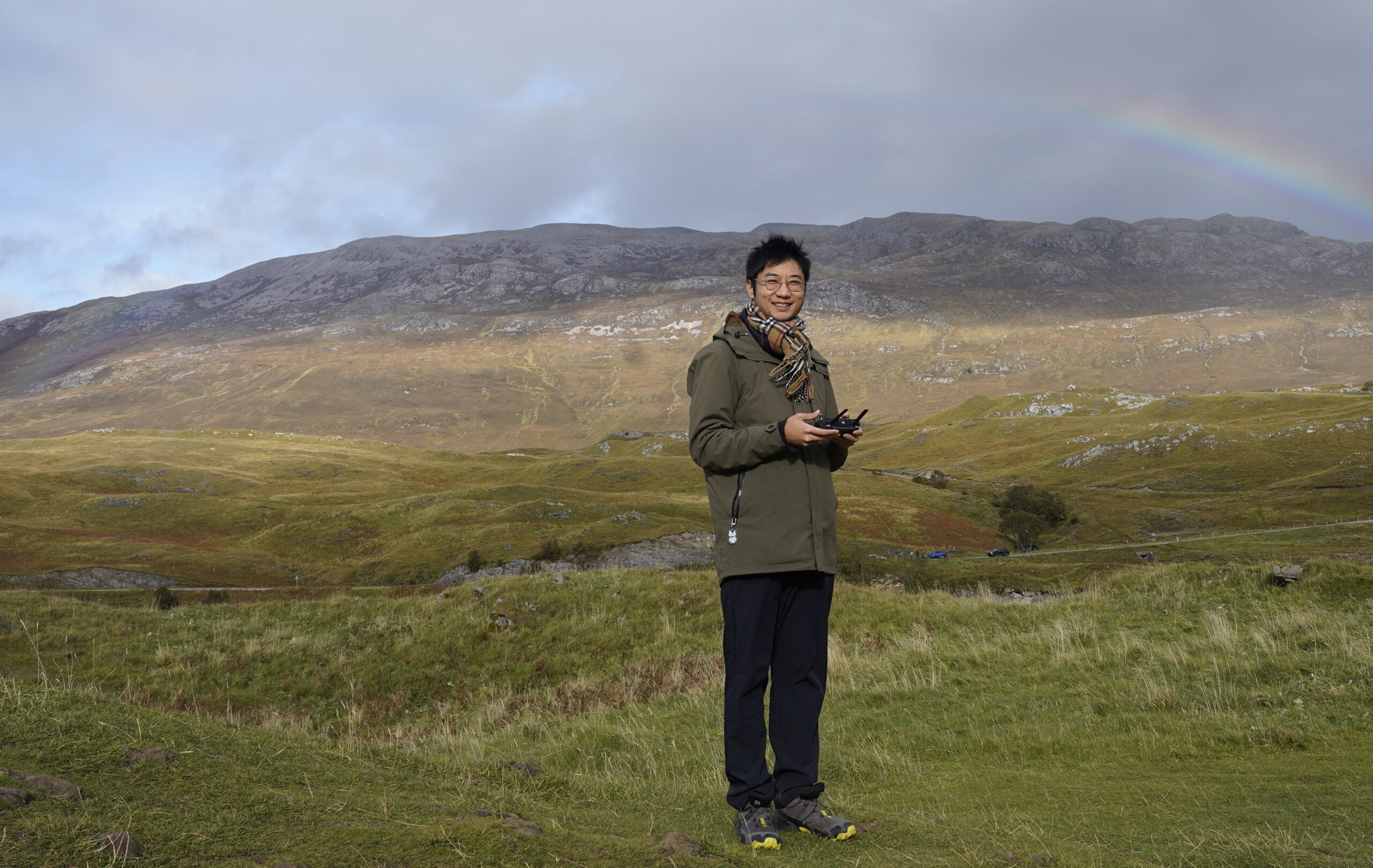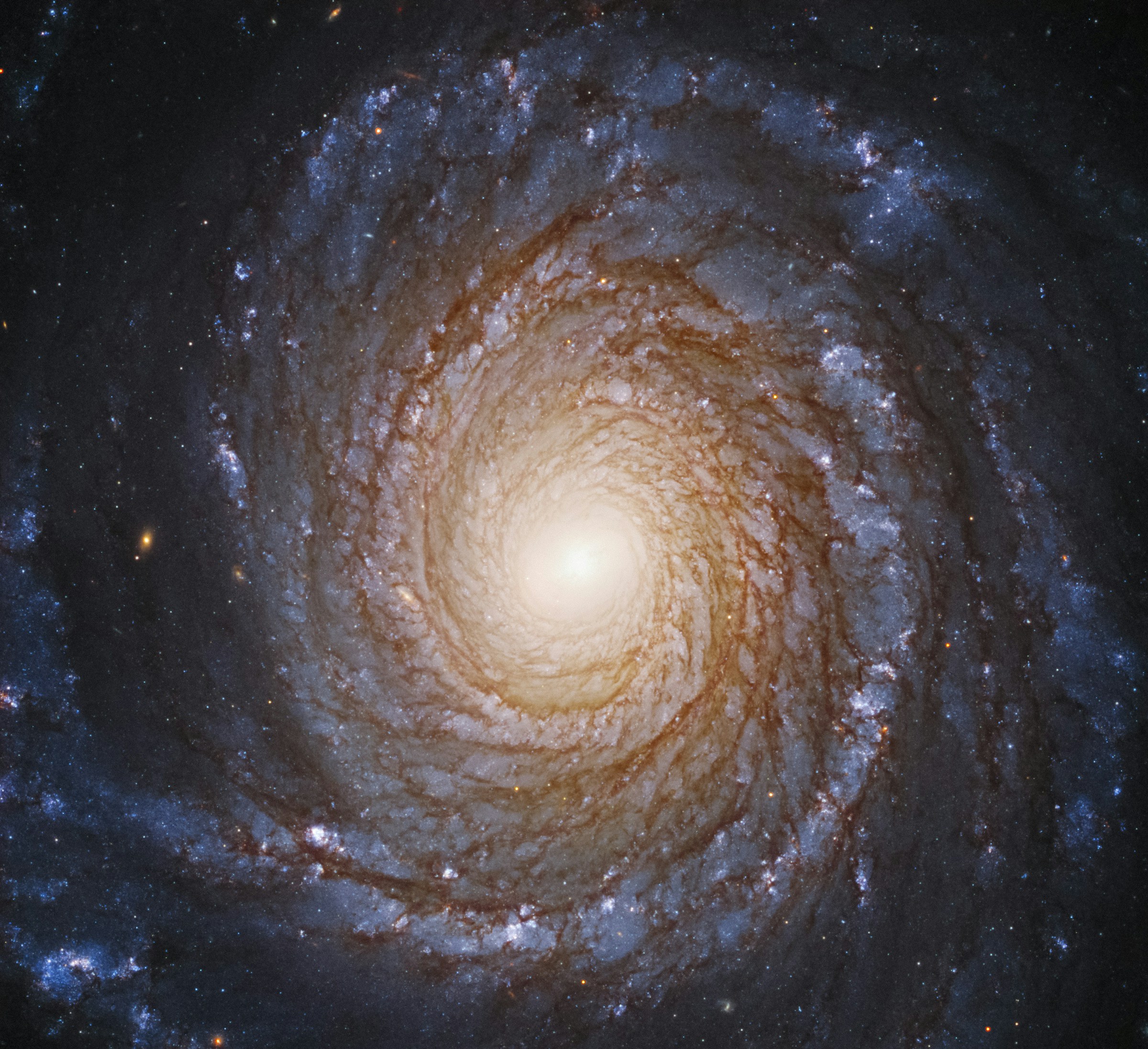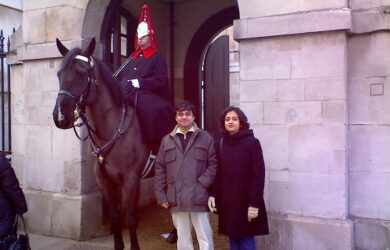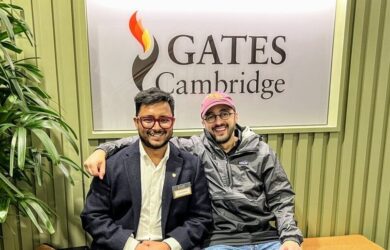
Ming Yang's PhD in Maths and Theoretical Physics seeks to unite quantum mechanics and general relativity to illuminate the greatest mysteries of energy forces in the universe
Maths feels like a language that doesn’t change with time and through which you can communicate with people hundreds of years ago about a process that is about continuous discovery.
Ming Yang
Ming Yang’s immense curiosity about fundamental science started in childhood. He says: “Consciously or not, it always fascinated me how rich structures lie beneath very simple first principles.”
His PhD focuses on the chaotic behaviour of spacetime evolution near a black hole singularity – the points of infinite density at the centre of black holes where gravity and spacetime curvature become so extreme that the laws of physics break down.
“Gravity works beautifully, like fluid dynamics, at low energies,” he says. “But near a singularity, quantum effects dominate. Reconciling the two remains one of the biggest challenges in physics, and black holes are the perfect testing ground.”
By seeking to unite quantum mechanics and general relativity, his research points toward new physics that could illuminate some of the greatest mysteries in high-energy theory.
Childhood
Ming [2022] was born and raised in Beijing. His curiosity was shaped early by his two grandfathers. He spent much of his childhood with one grandfather, a geography teacher who recorded hydrographic data along the Yangtze River and studied earthquake modes. He also grew up hearing stories about his other grandfather- who passed away before Ming was born – one of China’s leading hydraulic engineers who helped design and build dams in neighbouring countries.
During his school years, Ming’s curiosity often went beyond what was taught in the classroom, and he spent time exploring subjects independently. He joined the school orchestra as a trombonist, and at the same time, developed a strong interest in mathematics and science, competing in national Olympiads in maths, physics and chemistry during his teenage years.
That same curiosity soon turned outward – toward the cosmos. Ming joined a Boeing-sponsored competition to design a permanent settlement on Mars, where his large team advanced through the national and Asian finals before winning the global championship in the United States. The challenge required participants to combine design and strategic planning to create every aspect of a sustainable Martian colony within 72 hours. Ming was very invested as he had dreamed of being an astronaut as a child until his myopia disqualified him.
Cambridge
When he graduated from high school in 2017, Ming wasn’t very sure of what he wanted to study. He applied to the University of Hong Kong to do Engineering. The University ran a joint programme with the University of Cambridge so in 2018 Ming came to Cambridge. A year later after his first-year exams, he switched courses and started studying Maths. Although he enjoyed the idea of applied research, Ming found that he wasn’t drawn to the software engineering and programming part of his original course. “I shifted from one grandpa’s path to the other’s,” he says. “Deep down, I’m more attracted to the infinitely expanding jigsaw puzzle of nature.”
Asked to describe that fundamental beauty, Ming says it is the fact that the logic of whatever is proved in maths follows for generations to come and does not change according to people’s opinion. “It feels like a language that doesn’t change with time and through which you can communicate with people hundreds of years ago about a process that is about continuous discovery,” he says.
Ming combined his undergraduate and master’s degrees and did two research projects. The first examined quantum communication, where information is transmitted according to the counter-intuitive rules of quantum mechanics. He studied indefinite causal order – a phenomenon where the order of operations, what happens first or second, can itself exist in a quantum superposition. “Two events can influence each other without a fixed before or after,” he states.
The other project was on marine biology. Ming studied the optical properties involved in the bioluminescence process in a small marine bacteria. He chose diverse topics in order to explore what different types of research might involve.
PhD
For his PhD in Applied Maths and Theoretical Physics, which he began in 2022, Ming is based in the Faculty of Mathematics. He began to study Theoretical Physics only in the second year of his undergraduate degree after returning from China following the first Covid lockdown. He likes it because it combines mathematical rigour with physical intuitions and involves relatively simple equations for complex theories that explain the whole picture relating to physical phenomena.
“Sometimes you start with a physical phenomenon and wonder why it happens,” says Ming. “Other times, you begin with a theory and test whether its predictions make sense. The only language we know that can describe nature precisely is mathematics, but there’s no guarantee that our equations will always work. For instance, fluid dynamics explain ocean currents and even predict the weather remarkably well, but they can’t describe how water boils and turns into steam – that requires ideas like symmetry breaking and phase transitions.”
He adds: “In that sense, the theories we use are effective, but not fundamental. As we probe higher energies, water molecules break apart into hydrogen and oxygen, then into electrons, protons and neutrons, and as we push deeper still they form quarks and gluons. Eventually, we hope to discover an ultimate theory that contains all of physics – and from it, derive the lower-energy theories that explain the astonishing range of phenomena we see in the world.”
Black holes

Photo by NASA Hubble Space Telescope on Unsplash
Ming’s PhD explores the connections between quantum wavefunctions, which describe the states of a black hole singularity, and automorphic forms, well-behaved functions that repeat or exhibits a specific type of symmetry in a complex space. The automorphic forms are the same deep mathematical structures that underpinned Andrew Wiles’ proof of Fermat’s Last Theorem. “If we imagine a black hole as a drum or a piano,” Ming explains, “we can strike it with an imaginary drumstick and study the vibrations. Something truly magical happens – prime numbers begin to appear, woven into the wave patterns of the black hole itself.”
Ming’s supervisor is Professor Sean Hartnoll, who was supervised by Professor Gary Gibbons, a former student of Professor Stephen Hawking. Hawking’s influence, Ming says, “is part of what makes Cambridge such a magical place.” He hopes to remain in Theoretical Physics after completing his PhD because he loves finding out how things work and being creative. “All discoveries in the field are full of surprises,” he says. “That’s their beauty – you come with a question and gradually find the answer. It either works or it doesn’t.”
Ming spends his spare time doing photography and writing novels. He is a big fan of the Argentine writer Jorge Luis Borges who plays with narrative structure. He says he has found the Gates Cambridge community very inspiring and enriching, full of brilliant and exceptionally thoughtful people to discuss broad topics ranging from environmental sciences to psychology and humanity.
He believes that blue skies research in Physics is vital – not because it promises immediate applications, but because it lays the intellectual foundations on which applied science is built. He says: “It can seem that what we are doing has no use except an aesthetic one, but in hundreds or thousands of years people may be able to do something with it, for instance, it took almost 2,000 years for Hero’s Aeolipile, a spinning gadget powered by steam, to become the steam engines that propelled the Industrial Revolution. There is a continuity of knowledge there that can change the world.”
*Picture credit: Hubble Probes the Black Hole Inside a Majestic Spiral Galaxy. The graceful, winding arms of the majestic spiral galaxy NGC 3147 appear like a grand spiral staircase sweeping through space in this Hubble Space Telescope image. They are actually long lanes of young blue stars, pinkish nebulas, and dust in silhouette. Credits: NASA, ESA, S. Bianchi (Università degli Studi Roma Tre University), A. Laor (Technion-Israel Institute of Technology), and M. Chiaberge (ESA, STScI, and JHU). Courtesy of Unsplash.












